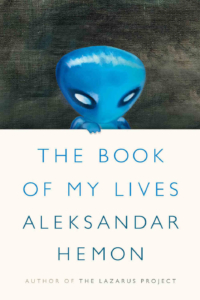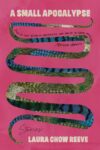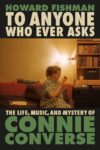Aleksander Hemon’s new memoir, The Book of My Lives, is a requiem for youthful art, for the giddy, irreverent and amoral aesthetics of adolescence. Living in Sarajevo shortly before the Yugoslav Wars, he and his friends — all caffeinated, precocious and bored — twirled themselves along the border between experimental art and life. Like latter-day Dadaists, they hosted ridiculous performances that tried too hard to be edgy: a discussion about alcoholism and literature, in which all the panelists were drunk, or a John Cage performance that featured “a hairy man eating an orange and a banana in front of the microphone.” They dreamt impossible projects, like releasing vicious dogs and erecting barbed wired around the most well-to-do in the audience. With these pointless provocations, the young aesthetes somehow channeled the atrocities to come; it is as if the future had percolated back into the present, filtered by naïve aestheticism.
Hemon’s portrait of pre-war Sarajevo has striking parallels to Weimar Germany — decadent parties, loose and lusty passion, adulation of the offbeat, and brazen, blind aspirations. And all of this electrified by a dark foreboding: “It was a great fucking time, the short era of disaster euphoria, for nothing enhances pleasures and blocks guilt like a looming cataclysm.” It is in the moments of quiet dread — in that place where artful provocation, orgiastic ecstasy and unimaginable violence come too close together — that Hemon’s writing is most touching and terrifying.
He writes, for example, of his favorite professor from his University days, Nikola Koljevic, a proponent of New Criticism who insisted that students “analyze the inherent properties of a piece of literature,” and disregard “politics, biography or anything external to the text.” We should hardly be surprised that this young student, enamored with an approach to literature that expunged the world from the word, would also dream of editing an anthology entitled, “Irrelevant Poetry”. After Hemon graduated, he invited his professor for an evening stroll; Hemon remembers how the old professor gently “put his hand on my shoulder . . . his fingers cramped like hooks as he held on.”
Several years later Hemon left Sarajevo — only a few months before the siege — but he would continue to see his favorite professor on TV. Koljevic had become the right-hand man to the notorious war-criminal Karadzic (who was only recently found, hiding as an bearded mystic in Belgrade), using his fluent English to defend the Serbian war machine; instead of teaching students to ignore the politics of art, he now tried to teach journalists to ignore the atrocities of war. The present was taking revenge on the past, infecting the very roots of Hemon’s artistic feeling. Hemon suggests we can read these scars in the very text before us. “I excised and exterminated that precious, youthful part of me that had believed you could retreat from history and hide from evil in the comforts of art.”
The first chapter of this collection — the only one that is disappointing — reads like an unfortunate artifact of this trauma. Hemon is certainly a masterful writer, which makes it particularly bemusing to read sentences like this: “It has become harder to talk about us and them now that we have met and married some of them — the clarity and the significance of differences were always contingent upon the absence of contact and proportional to the mutual distance.” While the rest of the book shimmers with brilliant prose and subtle insight, the first chapter lumbers didactically between his earliest memories and American politics. In this chapter, Hemon becomes an armchair phenomenologist of childhood (“what I said othered Almir, it made him feel excluded from the group I was presumably unimpeachably part of”) and boring political critic (“There is also a neoconservative approach to the other…”). Here, he writes like an impressionable Freshman, newly introduced to the tired idea of ‘The Other’. It’s as if he must regress to undo his earlier, adolescent faith in aesthetics unencumbered by politics. Does he find redemption in this ponderous prose? His old, inspiring, evil professor haunts this chapter, spooking his former student away from the weird playfulness that characterized his early forays into art.
Which is not to say he should return to his earlier, innocent life as a doe-eyed, experimental aesthete; as Joan Didion showed in her essay about the Haight Ashbury in the sixties, “Slouching Towards Bethlehem,” those who blindly try to escape from mainstream society tend to unwittingly reproduce its darkest traits. And Hemon is all too aware of this. In one of the best moments in the book, Hemon tells of the year he and his best friend Isidora (a fellow founder the experimental art group, Club Nolens-Volens), threw a Nazi-kitsch party for her birthday. As you might expect, the Yugoslav State Security didn’t appreciate the party’s awful, campy irreverence. Rather than a slap on the wrist, the attendees were pilloried, their names nationally televised. Some time later, Hemon spent the night camping with an army reservist, who, unaware who he was talking to, fantasized about executing everyone who had gone to the birthday party. “Let’s drink to that, the reservist said, and we did.”
Things eventually cooled down, but the most devastating blow was yet to come. Isidora moved to Belgrade, and eventually became a “down-right, unabashed fascist,” marrying a man who would become a Serbian war criminal. “Our friendship has long ceased, but I could not help questioning what had happened — maybe the fascist party had been concocted by her fascist part, obscure to me. Maybe I hadn’t seen, blinded by the endless possibilities of Irrelevant Poetry, what she had seen; maybe I had been a pawn in her chess musical.” For Hemon, history repeats itself, but first as farce, and then as tragedy.
. . . Then, perhaps, again as farce? In the next sentence, which ends the section, he writes, “Maybe my life had been like one of those Virgin Marys that show up in the frozen-food section of the supermarket in New Mexico or some such place — visible only to believers, ludicrous to everyone else.” But Hemon refuses to leave us with confused tragedy. His youthful, comic absurdism hasn’t completely withered under the tragic seriousness of Sarajevo. It remains — a final ‘fuck you’ to his favorite, murderous professor.
This post may contain affiliate links.









